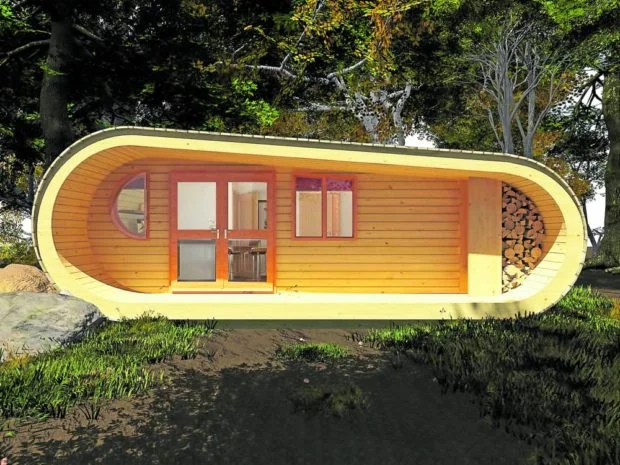As territorial beings, we generally associate social status with properties that are owned, documented and valued based on their inherent and environmental attributes.
From the nomadic times when the spatial disposition of human abodes was governed by natural elements, to the agricultural economy that was sustained by systematic food production, land was key to survival. The global economy may have loosened the concept of territories but even the cross-border flow of assets still has very strong geographical underpinnings.
Land-based real estate
Is real estate synonymous to land? Physically demarcated and tradeable properties constitute real estate, which generally refers to vacant lands or to buildings and the land on which they stand (DiPasquale and Wheaton, 2021). These are tangible and measurable entities that are governed by urban economics and social geographies.
There are emergent built forms that challenge the conventional notions of real estate. Building sites are not anymore confined to two-dimensional land areas that are defined by the usual technical descriptions inscribed in land titles. There are different site and location features that do not fit within established typologies and are, therefore, not governed by existing legal frameworks.
Statutes governing sites and locations
The National Building Code of the Philippines (NBCP) refers to properties as sites and lots.
While the code does not explicitly limit “sites” to land, Section 704 states that “No building shall be constructed unless it adjoins or has direct access to a public space, yard or street on at least one of its sides…” Section 105 of the NBCP Implementing Rules and Regulations further states that “The land or site upon which will be constructed any building or structure or any ancillary or auxiliary facility thereto, shall be sanitary, hygienic or safe”.

Local government units prepare Comprehensive Land Use Plans that are predominantly anchored on the allocation of uses to the finite area of municipal or urban land.
Emergent real estate concepts
Space is both multi-layered and multi-dimensional and so much of its existence is not captured by our regulatory and asset management systems.
Gravity-defying building design concepts include building on vertical cliff walls rather than on flat or gently sloping land. There are also suspended habitable spaces that are tied to vertical supports rather than sitting on underground foundations. Beach resorts would have accommodation rooms on water rather than on land. And there are floating or even submerged structures that host restaurants and institutional facilities.
Time-shared, transient, and mobile spaces
Multiple users and shared ownership are arrangements that redefine territoriality. Purchasing rights to use residential or recreational spaces based on agreed or advance booking arrangements deconstructs the notion of personalized spaces.

Temporary enclosures such as airconditioned tents used for events, stalls for flea markets and facilities for disaster evacuation are structures that may be set up for a limited number of hours or days. Mobile homes and stores are spaces on wheels that may be plugged onto utility systems for a given period of time. Co-working spaces replacing the traditional offices are reflective of changing work cultures.
Lags in institutional and governance systems
New spatial manifestations of changing social orders need to be complemented by enabling laws and administration systems. Even with all the parametric building designs defining the cosmopolitan urban landscapes, the NBCP is loaded with prescriptions on required lengths, widths, heights–dimensions that are based on the cubic form of buildings.
While the work-from-home setup has redefined many households’ lifestyles and use of domestic spaces, we continue to be constrained by zoning ordinances that segregate land and built spaces according to uses. Business permitting systems adhere to land use classification according to residential, commercial, institutional and industrial uses among other coded land uses. We have yet to fully tap the potentials of air rights in supplementing land-based developments.
The need for institutions to catch up
Exploring other real estate development concepts based on emergent people-space relationships is important in view of the many issues besetting the environment and the everyday places we move around in.
The urbanization trend and the ever-increasing demand for urban space that goes with it will always call for new ways of augmenting limited supply of land. New building and development technologies will continue to translate to innovative designs that will also redefine the words site and location. Looming threats of climate change call for new regulations in the use of water bodies, forests and mountains. The proliferation of informal settlements in risk areas also require interventions such as public housing that will accommodate low-income earners in city centers.
Design concepts abound but these need to be nurtured by research and production support mechanisms. They can, thereafter, be widely used and eventually become part of the collective built form through inclusive access systems.
References: DiPasquale, Denise, William Wheaton (2021). Urban Economics and Real Estate Markets. Prentice Hall, Englewood Cliffs, NJ.
UP National Engineering Center Building Research Service (2017). Building Resilience, Proposing Policy Interventions for the Resilience of our Buildings, Houses and Structures
The author is a Professor at the University of the Philippines College of Architecture, an architect and urban planner
If you like this article, share it on social media by clicking any of the icons below.
Or in case you haven’t subscribed yet to our newsletter, please click SUBSCRIBE so you won’t miss the daily real estate news updates delivered right to your Inbox.
The article was originally published in Inquirer.NET and written by Prof. Grace C. Ramos.







More Stories
Vista Land Celebrates 50 Years with Sandiwa: An Event Honoring Leadership, Legacy, and the Filipino Dream of Homeownership
Vista Land Celebrates Love Month in Ilocos Region
Vista Land Bridges Cebuano Heritage and Progress with Valencia by Vista Estates